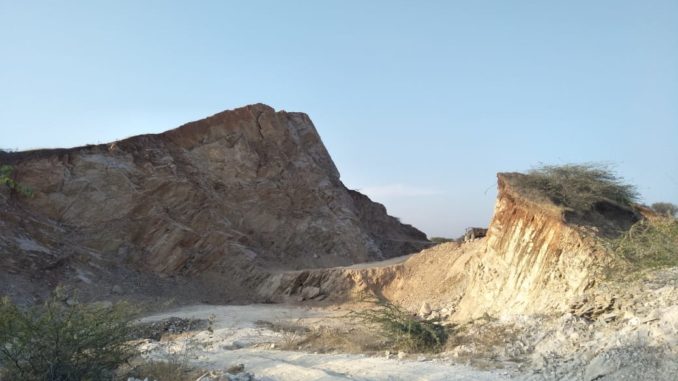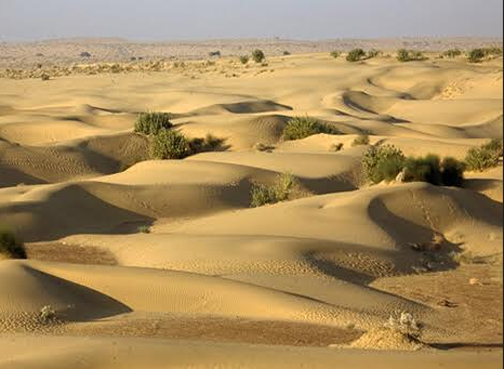
An integrated plan and approach are the need of the hour by the respective Development Authority from Central government to the state government to protect the Aravalli range’s green wall by monitoring extensive plantation, curbing mining, developing human resources, irrigation and conventional source of energy for humankind. – Dr. Laxmi Kant Sharma
Dr. Yash Goyal, TIP Correspondent in Jaipur

JAIPUR (TIP): Environmental Scientists at Central University of Rajasthan (CUR) have warned that ‘Sandy Complex’ (sand dunes in desert) formation is changing its pattern and shifting from Western Rajasthan to Eastern Region in due course of decades due to the climate change, urbanization, and depletion of green wall along Aravalli range.
The most threat of shifting of sand dunes is from Palanpur (Gujarat) to NCR (National Capital Region) via western Rajasthan due to degradation of Aravalli hills and illegal mining activities, and that is the most threat to human habitat in eastern region including Jaipur, a research paper of CUR scientists appeared in the ‘Journal of Arid Environments’ (Elsevier) recently cautioned.
In a project under the United Nations Convention to Combating Desertification, the last decade (2008-2018) has caused more harm and destruction to desert ecology and natural green wall over Aravalli spread from Gujarat to Rajasthan, Dr Laxmi Kant Sharma, senior scientist of EnvironmentalScience at CUR who led the research, told TIP while discussing his research paper.
“It was researched out through scientific parameters that sandy complex has changed its formation pattern from Jodhpur divisions covering Jaisalmer, Barmer and parts of Bikaner district and heading towards Jaipur, and NCR. However, if green wall on Aravalli hills is not protected in near future, the pattern would move further towards other regions”, Dr Sharma said. “Air pollution in NCR (Delhi) is mostly due to suspended particles (sand) and it is occurring due to rise in sand and windstorms in the arid regions of Rajasthan in the last 10 years. The eco-sensitive location of the Thar desert needs attention to prevent its vulnerability, otherwise, sandstorms like ‘gubar’ will be seen in NCR”, Dr Sharma maintained in his claim.
An integrated plan and approach are the need of the hour by the respective Development Authority from Central government to the state government to protect the Aravalli range’s green wall by monitoring extensive plantation, curbing mining, developing human resources, irrigation and conventional source of energy for humankind, he suggested in his joint paper.
The Thar Desert is one of the most populous deserts on the globe. It’s spread over a 31.7-million-hectare area in which 75% (Covered: Jodhpur, Barmer, Bikaner, and Jaisalmer) of the area is in India and the rest in Pakistan, according to the research paper.
Dr Sharma and his two young scientists Alok Raj and Kritika Somawat have explained and warned about the Thar desert’s and its eco-sensitive regions’ recent 50-year status under the UNCCD framework using the MEDALUS approach based on geospatial techniques.
It used LANDSAT data for vegetation & LULC; socio-economic (literacy rate, population growth rate), climatic (rainfall, temperature, windspeed and aridity index), and analyzed to evaluate eco-sensitivity of the region. Most of the area was under the susceptible category, which covers 38.14 percent of the total area, followed by critical sensitive, moderately sensitive and less critical and least critical areas.






Be the first to comment